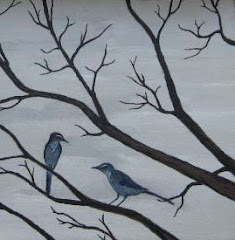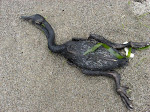Around the apartment, we are finding numerous spiders and their webs. They seem to increase in abundance each year during the late summer and early fall.

Last year, Sarah suggested that they spin their webs in anticipation of the annual emergence of Pacific dampwood termites like this one that was successfully captured near our door.

There is also an increasing number of funnel-shaped webs built atop the manicured shrubs that line the apartment property.

Their occupants hide in a hole and run out to catch whatever gets stuck.

This slug is probably a bit large to be a meal. This time of year, I tend to find more interesting insects than birds on my walks around the neighborhood.

Back at the apartment, I celebrated a multivariate statistical milestone! I ran my first ever Principal Component Analyses on vegetation data from New Mexico. This technique is a great way to compress a lot of data into a few values that represent the trends shared by many variables. I could go on, but I don't want to put anyone to sleep.

In more exciting news, as you may have noticed from the counter at the right, college football season starts this weekend and I can't wait to cheer on the University of Oklahoma Sooners. I became infected with Sooner madness while a graduate student at OU and three years in Oregon have not diluted the effects, though I do cheer for the Oregon Ducks as well. Unfortunately, the Sooners play the small school of Chattanooga on Saturday, which does not warrant national TV coverage, so I will have to wait for another weekend to watch them play. I predict that Oklahoma will face off with tradtional powerhouse USC in the National Championship in January.






























